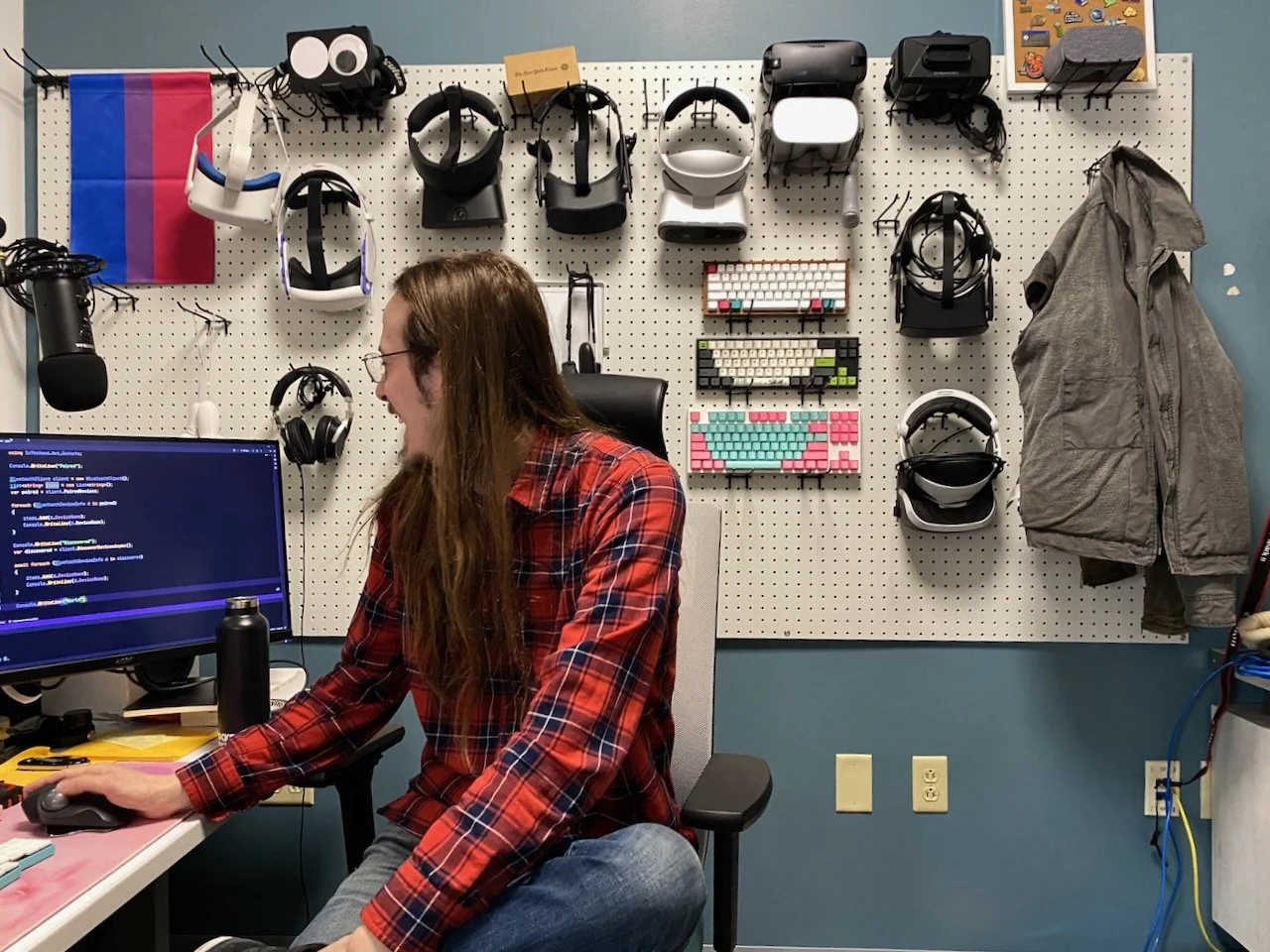IMM Students Research a Better Way to Model in VR
This image set depicts some of the potential features of the 3D modeling program Chatham University students will research and test this summer. (Courtesy of Hunter Dyar)
As Hunter Dyar sees it, virtual reality should be a no-brainer when it comes to 3D modeling. Why isn’t it?
After posing that question to some of his students in Chatham University’s immersive media program, Dyar—an assistant professor of immersive media—and his students homed in on what they saw as two major limitations of these programs.
One: they don’t provide an easy way for multiple users to simultaneously edit a model. Two: the tools (such as computer mice or digital pens) used with these programs aren’t intuitive for new users.
“It’s challenging,” he said. “It takes lots of practice and experience, and it’s time-consuming.”
It was a realization right out of an infomercial: there has to be a better way. Now, with a grant from the Frank-Ratchye Studio for Creative Inquiry and Carnegie Mellon University’s Extended Reality Technology Center, Dyar and his students are ready to try to find some solutions.
Their idea, as Dyar explained it to Pulse, is to find a way to use extended reality (a catch-all term that covers augmented-, virtual-, and mixed-reality technologies) to put the user in front of a pile of digital clay.
From there, they should be able to mold this material into the shape of a person, a bear, a pencil, a mountain, or anything that could conceivably be shaped with real clay.
Dyar explained why the project, called Clayze (it rhymes with “crazy”), is focused on mimicking the way people use clay: “There’s a preexisting set of signifiers with how we manipulate clay,” he said. “We blob, we poke, we touch.”
Assistant Professor of Immersive Media Hunter Dyar looks at code in his office. (Mick Stinelli)
After rolling clay or dough in our hands, we know it should form a ball. But Dan Bartell ’25 said that physical relationship between the designer and the material is vastly different from how 3D modeling programs usually work.
“I think a lot of VR technologies still think with a screen brain, where I have a mouse, I have a cursor, I point and click here,” said Bartell, a third-year Chatham student who majors in both immersive media and history.
“When you’re creating something in 3D, if you were to actually use Play-Doh or something— you’re moving your hands,” he continued. “You’re shaping and modeling the object in front of you that you want to see.”
A program that could do this could save time, effort, and frustration for anyone designing shapes and models in 3D, whether they’re creating characters for visual media or sketching out designs for a new model of car.
But the end goal of the experimental design research for Clayze is not to create a new product by the end of the summer; it’s to find new possibilities. The results will be open source, so anyone who’s interested in building from the concepts developed by Dyar’s team will be able to play with and modify those tools.
Also participating in the project are students from Carnegie Mellon University, where Dyar also teaches as an adjunct professor. He hopes those CMU students will be able to bring their own strengths in computer programming and other skills into this collaboration with Chatham’s IMM students.
“I hope it will be interesting,” Dyar said. “I hope it will be experimental and new and different in a way that proves a point for a more robust version or implementation of this tool.”
Bartell, who’s already developed skills in coding and ideation, said he’s looking forward to trying new ways to solve such an abstract problem and to use this up-and-coming technology.
“I’m excited to get hands-on with it,” he said.
Learn more about immersive media at Chatham University during the program’s academic visit day on March 15, where you can see IMM’s cutting-edge technology, meet IMM students, and talk with program faculty.


